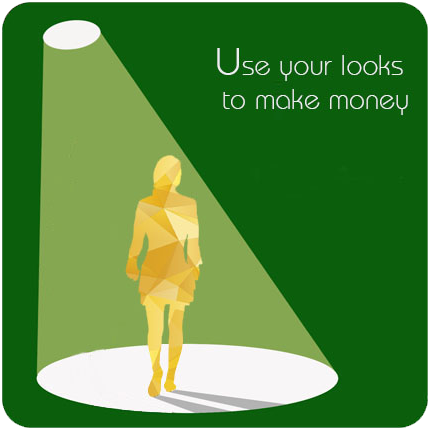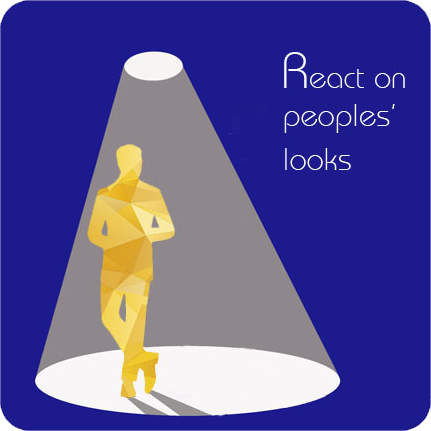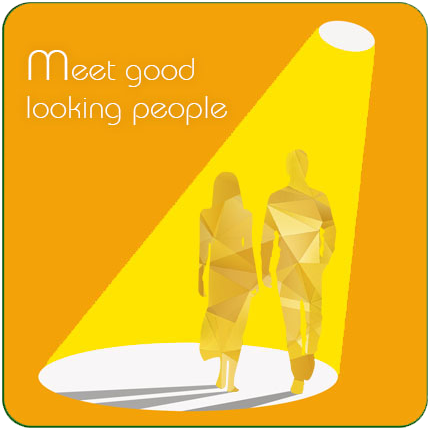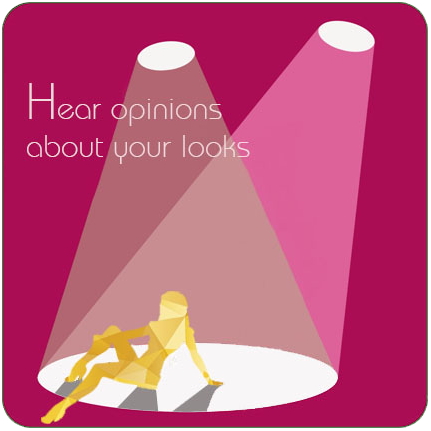7 reasons guys should wear pink and girls should wear blue
We consider pink as feminine and blue as masculine, but this is only because we are not always familiar with the reasons that led to that. The truth is that it is far from being reasonable. Prepare to be amazed!

We'll start by making two provocative statement:
1. The “blue for boys and pink for girls” convention, was originally the other way around, but was changed by the nazis.
2. Stupid people, sure they know, while smart people, know they do not know.
Most readers of these lines will raise an eyebrow in contempt at the claim that they belong to the wrong camp.
Whether it's politics, vaccines, religion or veganism. Right and left, sacred or profane, to vaccinate or not, being a carnivore or vegetarian and any other complete faith. Every camp is sure to be right and makes convincing arguments to the extent that they anchor their claims and fit their worldview. I am not arguing that truth and justice are with one side. No. I claim we do not know. We do not know what are the forces that control our consciousness and history is not always flowing and unfolding before us objectively. Therefore, naturally, we choose the side that suits the culture, society and environment in which we grew up, our character and the content to which we are exposed. We cite cases that have come our way, whether in person or as stories we have heard, as examples that will substantiate the arguments. Thus we become devout believers in the same claim, on the same side, in the same camp to which we belong and in which we are siding.
There are only a few cases where the reasons responsible for our culturally programmed reasoning can be traced back to their sources. We will refer here to the issue of gender and the separation that is made in the matter with the help of colors - after all, we are programmed to deduce from colors, the gender that they indicate. A subjective truth that is assimilated in us objectively. We are programmed to carry that rooted dichotomy that differentiates between the genders using colors, without justification.
This truth is objective to most of us - even if we oppose that color separation, even if we refuse to take part in social conventions, even if we do not want the relevancy of that separation to apply to us, still, a baby wearing pink pants and a pink shirt will be instinctively linked to feminine characteristics and we will immediately assume that this is a baby girl. Even if we do not participate in this social-colored dichotomy, we will instinctively assume that the parents of that newborn did accept the social convention and that for them, the color does represent the gender, and we will automatically assume that it is a female.
This means that we have accepted the fact that others do use colors for gender segregation. Which means that even the minority that does not agree with the separation, is socially aware of it and therefore also applies to it.
This was not always the case. History teaches us that for centuries, babies were dressed in white. Males and females alike, all in diapers, hats and dresses designed to facilitate diaper changing, all in white.
In the mid-19th century, the end of the Victorian era, colors began to slowly and gradually trickle down to consciousness. At first these were pastel colors that appeared in baby clothes, but they still did not represent gender segregation. There was no connection between pink and blue in general, between colors and between gender.
The formation of the link between color and gender, in fact, began contrary to the prevailing perception today; A controversy that began in the United States over the attribution of colors to gender turned into two camps, one of which led decisively.
In 1914 the American newspaper Sunday Sentinel, Advised mothers: "If you like the colour note on the little one's garments, use pink for the boy and blue for the girl, if you are a follower of convention." - Indeed, the opposite of everything that is familiar and obvious to us today.
In 1918, the Ladies' Home Journal wrote: "There has been a great diversity of opinion on the subject, but the generally accepted rule is pink for the boy and blue for the girl. The reason is that pink being a more decisive and stronger colour is more suitable for the boy, while blue, which is more delicate and dainty, is prettier for the girl."
In 1927, thirteen years later, Time magazine presented a chart of colors suitable for girls and boys according to the data of the leading stores in the United States.
Filene's in Boston dictated to parents to dress boys in pink, as did Best & Co in New York, Halle's in Cleveland and Marshall Field in Chicago.

The turnaround occurred in the 1940s. During World War II, the Nazis began cataloging and sorting out candidates for extermination. The classification system included partly marking prisoners in different colors as part of a coding method. Just as a yellow Star of David badge was meant to mark the Jews in a degrading way, homosexuals in the extermination camps were marked with a pink triangular badge pointing downwards and in this context, a connotation was created in a manner reminiscent of a female genitalia. A patchwork with feminine markings designed to humiliate these men. From the 1930s to 1944, between 50,000 and 63,000 homosexual prisoners were held in German camps.

In the 1950s, the years after the war, America moved away from colors reminiscent of military uniforms - khaki, dark green and gray, and was painted in lighter, happier colors. The revolution happened in the field of fashion, but not only. Products were made in light colors, kitchen cabinets were made in pink and of course - baby clothes.
With the advent of the 1960s, the women's liberation movement brought unisex clothing back into fashion among babies and throughout the late 1960s and 1970s, the dominant baby clothing fashion was colorful and genderless.
At the same time, in the early 1970s, Heinz Hager, one of the gay Holocaust survivors, wrote a book called "The Men with the pink Triangle." His book revolutionized, greatly influenced and contributed greatly to the development of the gay rights movement. The pink triangle has turned from a badge intended to humiliate and shame, to a symbol of international homosexual pride and a symbol of the movement.

This fact contributed and strengthened the connection created between pink color and feminine characteristics and with the advent and widespread use of fetal gender detection tests in the 80s, pink and blue returned to the fashion of baby clothes. This time, the pink was significant and relevant to those parents who could find out what the sex of the newborn would be in advance. Now that they could "dress" the room they had prepared for the baby ahead of time — one of the salient features was the choice of color that would suit the baby's environment to come. pink for girls, blue for boys.
Manufacturers of clothing, toys and baby products realized the impact that clothing colors have on parents and began to produce the color separation between boys and girls. Until then, the eldest son bequeathed his clothes to his new sister. The color of the clothes was not a problem and the parents took care of them and passed them from brother to sister, from sister to brother. Manufacturers found a way to leverage gender differentiation. They channeled it for profit and set out on large campaigns and used aggressive marketing methods to create a clear dichotomy and contributed to cognitive segregation. Now, parents of a male child who were expecting a new baby have purchased an entirely new set of products in appropriate colors, and the companies have doubled their revenue. That hypothetical American father, who did not agree that his son should be credited with homosexual traits, must have been careful to "mark" him with the "right" color.
Today we are culturally programmed. The separation seems to us completely objective and we pay for it appropriately. Add to capitalism the spices of Nazi madness, and we've got an effective formula for producing a temporary gender objectivity that the vast majority of us have no idea where it came from or why it started. Feminine pink and masculine blue.
Misleading gender segregation fixed in the society in which we live is not reserved for colors alone. Skirts are European attire, dresses are a Middle Eastern garment, heels were an integral part of Persian warriors attire. Archery, while riding a horse, became more accurate thanks to heels that anchored the rider's posture in the rescue rings. Heels were customary in Persia in the early 17th century, and from there flowed all over Europe. Men began wearing high heels as a status symbol representing heroism and power. Slowly, the lower class men also adopted the heels and the upper class raised its heels to differentiate itself. In an effort to gain "power" and little respect, women began to imitate men and cut their hair, smoke pipes, wear masculine hats, and wear high heels. But because they were perceived as superficial and foolish, they were finally left with the heels that were for fashion items and now, the men tried to differentiate themselves from them by ceasing to wear heels, until in 1740 they stopped wearing high heels completely. Male heels have become a female "product" and since then, for almost three hundred years, they have defined the gender of the shoe and not the other way around.
It seems that dissolving the foolish fixation will be considered an impossible task, but knowledge alone is enough to contribute and shatter any existing cultural convention. Every social axiom is prevalent. Each one certainly has a reason, but the reasons are not accessible to us and most of the time we are forced to choose a side and take on many conventions.
Having read that, we can now discuss the reasons, at eye level:
1
Guys should wear pink because for thousands of years, before the rise of nazis, it was consiedered not only masculine, but moreover, a war color. Red and pink were worn by warriers in Rome, it was their armor clothing, the cloth that wrapped their armor, that was under it and it was the color of their cloacks. and the color of feathers on their helmet. So did the greens before them - red cloths under and above the armor' helmets and accessories. Now, noone is advising you to go to war, it is just to state that mmany color is actually considered red and pink.
2
Girls should wear blue simply because it is one of the first colors associated with feminine It was already asociated even with the virgin Mary, as seen in ancient art.



3
Guys should wear pink because they don't need to mark their gender. they do not need assistance in showing their manhood. Just like they do not need to hold a sign to state that they are masculine, not holding this sign will not state that they are feminine. Now, as much as this sounds like a "why not wearing pink?" claim, it is actually a "wear pink by all means!" or if you want, it is actually this claim: "who's going to dictate what color I should wear? conventions? no, I'm opinionated. History? well, I know my history from way back and therefor, way more intelegent than what some might portray. pink is for girls? well, on what side were you on world war II? Aren't you scared to be mocked at? no, but it appears that you are!"
4
Girls should wear blue, once they see what it does to them on the big screen. Some of the most beautiful and iconic dreases, on some of the most beautiful and iconic women, were blue.

WARNER BROS. FRANCE
Gal Gadot in Patty Jenkins's Wonder Woman

COLLECTION CHRISTOPHEL / © UNIVERSAL PICTURES
Michelle Pfeiffer in a slip dress in Brian de Palma's Scarface (1983)

BETTMANN
Grace Kelly in a blue dress in Alfred Hitchcock's To Catch a Thief (1955)

BETTMANN
Elizabeth Taylor in a flowy dress in Joseph L. Mankiewicz's Cleopatra (1963)

PATHÉ DISTRIBUTION
Léa Seydoux in Christophe Gans's Beauty and the Beast

WALT DISNEY PICTURES
Mia Wasikowska in Tim Burton's Alice in Wonderland

PHOTO12/COLUMBIA PICTURES INDUSTRIES, INC. ALL RIGHTS RESERVED.
Kirsten Dunst in a Victorian-style dress in Sofia Coppola's Marie Antoinette (2006)

SILVER SCREEN COLLECTION/HULTON ARCHIVE/GETTY IMAGES
Judy Garland in a gingham dress in Victor Fleming's The Wizard of Oz (1939)

WALT DISNEY PICTURES
Emma Watson in an apron dress in Bill Condon's Beauty and the Beast (2017)

SND
Emma Stone in a Klein blue dress in Damien Chazelle's La La Land! (2016)
5
Much like jeans and even like sushi, pink was a color that belonged to the working class. Much like all of those things, they gained popularity and became status symbols. In the years 1890 until 1930, pink was the color of the manly working class. This is indeed very hard to imagine because even the photographs from that time are black and white, but this is what man kind found instinctively to be masculine. On one hand, it takes a lot to undo what the nazis did, while on the other hand, it takes a leader, an opinionated guy, a fearless personality, a wild spirit, a man to look up to, someone who is self confident. This is you, or this could be you.

6
Be special. If you wear a suit and goes to an event, about 95% of the shirts will probably be white or blue. Difrentiate your self by wearing a light pink shirt - it goes with self confidence. The same confidence that caused more than a few studies that showed that men who wear pink earn more money.
7
Studies reveal that red and pink are the most attractive colors to both men and women, but curiously, the two genders are attracted to the same colour for different reasons. Women are attracted to men wearing those shades because, according to one study, it sends signals of status and dominance. Yap, history is programmed to our genes, while conventions are being forced on our minds.
1. Women are atracted to confident (we're all do actually)
2. Women are attracted to red and its variants.


Justin Bieber loves pink - Premiere Of YouTube Originals' "Justin Bieber: Seasons", in pink pants.

Justin Bieber in the studio

Pharrell

Jamie Foxx

Brad Pitt
or tell a peng friend:
How It Works?
Earn Money

You get payed to model, based on your top pics.
You can find a job, where your good looks plays a part.
Teach us your taste

By ranking others, you teach us your taste and therefore, increase your exposure.


